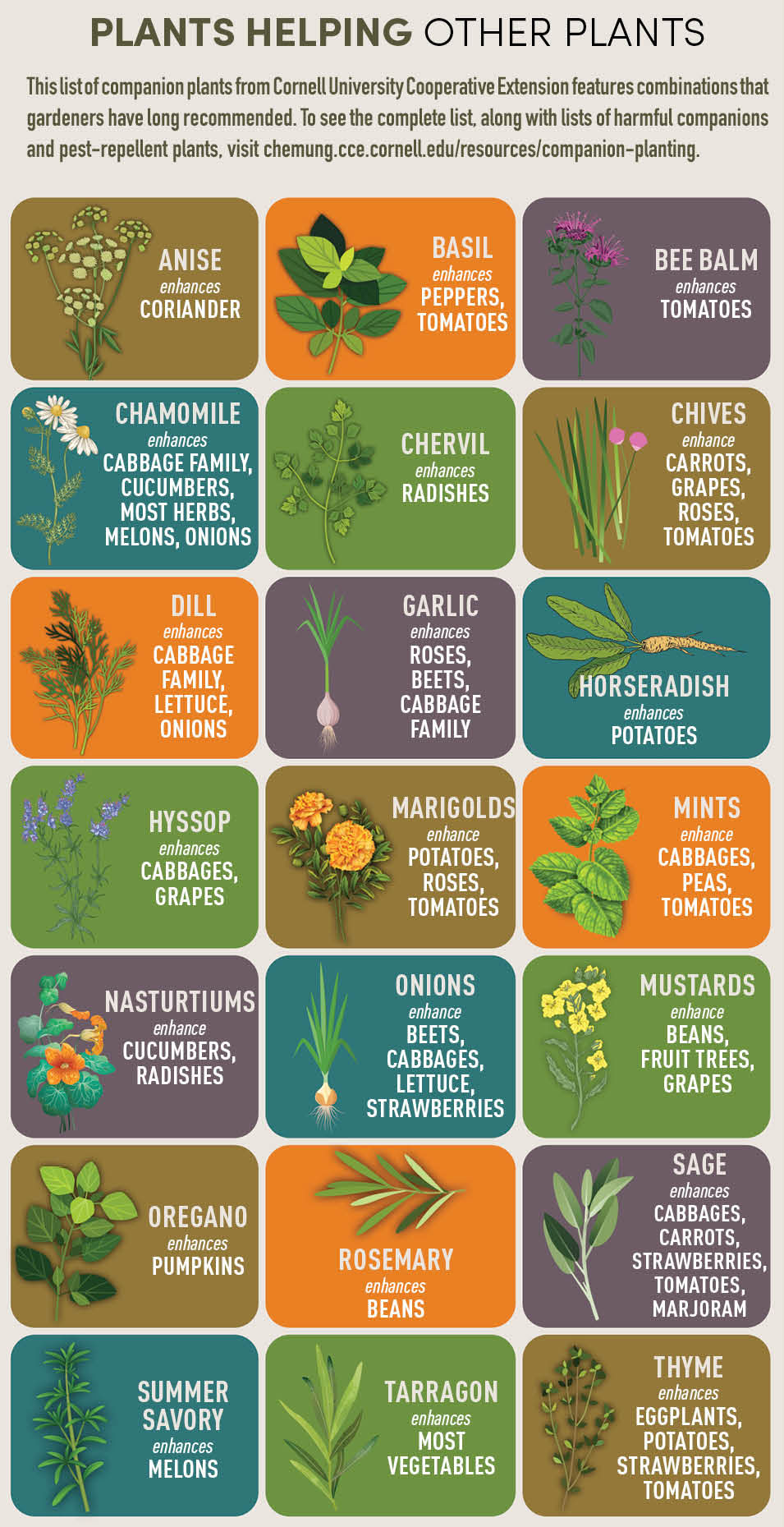Companion Planting
12 Apr 2021
Arranging your garden with companion planting in mind can help deter detrimental bugs, help to balance soil nutrients, provide shade for easily sun-scorched plants and much more.
By Brian James Wheat
We all need a companion—someone to share life’s burdens and joys, and lend a helping hand. Plants are no different in that regard. Here, Brian Wheat, CSU Master Gardener and owner of Lafayette Florist Gift Shop & Garden Center, explains which plants partner best and worst in the home garden.
Pleasant Partners
Interplanting flowers, vegetables, herbs and other plants that are mutually beneficial to each other’s well-being is the age-old practice of companion planting. This technique improves soil, repels pests, and increases overall quality and yield. Some companion plantings have yet to be scientifically proven, but many are easily observed in the garden. Native Americans refer to corn, beans and squash as “the three sisters” for their mutually beneficial properties. Beans like to climb up the cornstalks and return the favor by fixing nitrogen in the soil, while squash’s large leaves shade out weeds.
Beneficial plants grown in close proximity can deter insect damage, while others help improve their neighbor’s flavor. Some can act as supports for weaker plants or plants that need to vine. For example, a sturdy sunflower can support vining snap peas or cucumbers. Taller plants can protect more tender and fragile seedlings from harsh sun and wind by shading them and providing a windbreak.
Basil and dill help defend tomato plants from notorious hornworms. Marigolds and parsley are some of the best companions for vegetables, as they repel an array of harmful insects. Chives and all mint plants stave off cabbage moths and ants, and improve the flavor of many vegetables. Hyssop, rosemary and sage also deter cabbage moths.
Nasturtiums lure aphids away from other plants and improve the flavor and growth of radishes. Many beautiful flowers and herbs, like zinnias, cosmos, marigolds, dill and cilantro, attract beneficial ladybugs, which eat aphids, mites and cabbage flies. Bee balm and basil can improve the taste of lettuce when planted nearby.

Plant Bullies
While many companion plants have beneficial and protective qualities, here are a few incompatible plant pairs: Don’t plant mint or onions near asparagus. Avoid planting pole beans or mustards near beets. Carrots don’t care for dill or anise, but they do like peppers, as well as chives, which can improve their flavor. Peas aren’t fans of garlic and onions, and you should keep all vining plants away from potatoes. Cabbage-family plants should be kept away from strawberries.
Remember to intersperse flower, herb and vegetable plantings to deter pests. Planting large groups of one type of vegetable creates a pest magnet.
Take the time to get to know your plants’ companions and bullies, and your grateful garden will reward you with abundant flowers and delicious produce. Wishing you good gardening!
Brian Wheat owns Lafayette Florist Gift Shop & Garden Center at 600 South Public Road in Lafayette.












